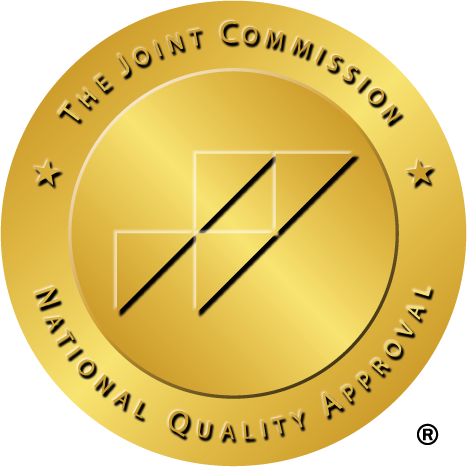Table of Contents
By now you’ve probably heard of fentanyl, an opioid drug designed for managing extreme pain and keeping patients comfortable in hospitals, but which has also started being used on the street and cut with other drugs to make them more potent.
Chances are when you’ve heard about fentanyl has mostly been related to how strong the drug is, and how it can easily cause dangerous overdoses that are hard to manage and easily turn fatal.
Those things are true, and they are a serious concern when it comes to fentanyl use, but most people haven’t heard that coming down from fentanyl can have its own risks and side effects.
Like most opioid withdrawals, withdrawing from fentanyl can be dangerous, especially when it happens suddenly and isn’t managed by a medical care provider.
One of the frustrations with opioid use is that these drugs can cause users to OD, be given a rescue medication like Narcan, and then immediately go back out in search of a new high.
That isn’t happening because those people don’t have the willpower to get better or a willingness to be sober. It’s happening at least in part because of how severe and uncomfortable, even dangerous, withdrawing from opioids can be.
You can safely withdraw from fentanyl, often with medical help to make sure your symptoms are controlled, and you have what you need to be safe, but it’s important to understand how serious withdrawal can be.
In this article we’ll talk about the signs of fentanyl withdrawal, common side effects from withdrawal, a typical fentanyl withdrawal timeline, and why you should always seek help if you’re planning to stop taking fentanyl.
What Are Some Signs Of fentanyl Withdrawal? Side-Effects Of Withdrawal
fentanyl works largely the same as other opioid medications, it’s just much stronger than most of those medications.
That means that the side effects and symptoms of fentanyl withdrawal are largely similar to other opioid withdrawals. Those symptoms include:
- aching muscles
- stomach pain
- anxiety
- agitation
- increased heart rate
- high blood pressure
- low blood pressure
- fever and chills
- nausea
- vomiting
- diarrhea
- tremors
- depression
- excessive yawning
- drug cravings
- seizures
- unconsciousness
Symptoms from fentanyl withdrawal are likely to be relatively severe, especially if you’ve been addicted for a long time, have developed a tolerance to fentanyl, or must take larger doses of the drug.
It’s also important to remember that more severe symptoms of opioid withdrawal from other opioids may mean that the drug you were taking was mixed with fentanyl or another strong opioid that you weren’t aware you were taking.
If you suspect that you are dealing with unexpected fentanyl withdrawal you should seek medical help immediately since the symptoms may be more severe than you planned for, and the complications of withdrawal are more likely to become serious quickly.
Possible Complications From Withdrawal
There are a lot of potential complications that can happen during fentanyl withdrawal.
For instance, the combination of nausea, vomiting, diarrhea, and fever can make it very easy to become dehydrated and might make it more difficult than usual to get hydrated again.
If you can’t keep liquids, even plain water down, it’s time to get medical help because dehydration in combination with other withdrawal symptoms can be fatal.
Even if you’re able to keep water down, if you can’t drink something with electrolytes in it, like Gatorade, juice, or even a little salt water, you might not be getting much benefit from the water. One of the big risks of withdrawal is electrolyte depletion.
When your electrolytes are depleted, you can drink all the water you want, but your body won’t be able to effectively process and use the hydration. Worse, drinking more water can actually start washing electrolytes out of your body at this point.
If you were sweating and suddenly stop sweating, that may be a sign that you are dehydrated and have depleted your electrolyte reserve, and in either case, you need to get medical help as soon as possible.
In addition to those problems, high and low blood pressure can both be dangerous and might need careful management.
If you have a history of blood pressure issues that existed before your addiction, you might need additional support to have a safe withdrawal. Low blood pressure can lead to coma, non-responsiveness, and death. High blood pressure can lead to coma, strokes, and other serious complications, some of which can also be fatal.
Depression is also a serious risk during fentanyl withdrawal, especially for people who had a pre-existing mental health disorder, especially if that disorder might have been part of what drove the person’s addictive behavior in the first place.
fentanyl Withdrawal Timeline
One of the few good things about fentanyl withdrawal is that most people have a relatively predictable timeline of how they will detox and go through withdrawal, and that timeline can be used to predict symptoms and to help with symptom management.
Here’s what you should expect if you’re going through fentanyl withdrawal.
Detox – The First 48 Hours
When you first stop taking fentanyl, you’ll probably have relatively few symptoms. It takes time for the drug to start working its way out of your system, and even more time after that for withdrawal and detox symptoms to begin.
It’s common for people in this phase to experience insomnia, sweating, mild muscle cramps, and the start of anxiety or depression, but symptoms should be largely manageable.
78-100 Hours After Your Last Dose
The most severe symptoms of withdrawal usually start at about the 78-hour mark.
This is when you can expect your strongest drug cravings, severe muscle aches, nausea and vomiting, and depression and anxiety to set in. You may have a bad headache, feeling restless or agitated, and seem to alternate between hot flashes and chills in this phase.
Remember, this phase won’t last forever, and you can get through this phase.
If you can make it a day or two like this without giving in to your detox symptoms, your symptoms should start to ease.
5-7 Days After Your Last Dose
Symptoms should be subsiding by this point, but you will likely still feel worse than you did in the first 48 hours. You may have brain fog or feel disoriented and depressed during this phase, but you should be able to start eating and drinking more normally again, and muscle aches and other symptoms should be easing off.
Week 2 On
By week 2 you should be down to much more manageable symptoms and may not even realize that some of the symptoms you’re dealing with are detox symptoms. You’ll still likely have some days where it feels like you’re in withdrawal for another month or two, but the worst is over at this point.
Why It’s Dangerous To Try To Do A fentanyl Withdrawal By Yourself
If you read through that timeline and thought that fentanyl withdrawal sounded doable, remember that those side effects are just what’s expected assuming your detox is managed well and you’re in good health.
For most people detoxing from fentanyl is a little riskier because the addiction itself can have a negative effect on your health, and because you might be dealing with a wide range of additional symptoms and complications.
Dehydration and seizures are probably the two most dangerous symptoms of fentanyl withdrawal, and both are much harder to manage after they’ve started than if you head them off before they start.
Going through fentanyl withdrawal with medical assistance can make it much easier to stay hydrated and deal with the symptoms of the withdrawal. IV hydration may be offered as an additional support, and your doctor might offer drugs that can help ease the worse of the symptoms and keep you safer if your symptoms get too severe.
That’s much preferable to winding up in the emergency room with complications, severe symptoms, and agitated or depression because of the withdrawal.
It’s safer, easier, and usually more effective to have a medically assisted withdrawal.
How To Mitigate fentanyl Withdrawal Symptoms: What To Do If Suffering From An Addiction To fentanyl
If you’re dealing with an addiction to fentanyl and want to withdraw and get into recovery, congratulations! Wanting to deal with the problem is a huge first step, and it’s worth congratulating yourself for making it this far.
The next step is planning your withdrawal. Getting off fentanyl can be difficult and dangerous, so having a plan in place is one of the best ways you can protect yourself right now.
Talk with friends and family about needing extra support and help while you’re withdrawing, and explain that you either need people with you at all times during your withdrawal, or you need to get medical assistance to stop taking this drug.
If your friends and family are willing to help you withdraw, make sure you have backup plans in place, and that they know who to call, and what symptoms to look for if something starts to go wrong.
Don’t want to take the risk?
We don’t blame you.
New Waters Recovery and Treatment Center is here for you, and we can help with all stages of fentanyl recovery, from medically managing withdrawal symptoms to helping you learn new coping mechanisms once the drugs are out of your system.
Contact New Waters today to learn more about our programs and see if our services are right for you!
Sources:
New Waters Recovery has strict sourcing requirements, relying on sources from scholarly research and peer-reviewed studies, as well as those from medical associations. We keep away from using third-party references as our sources. In order to learn more about how we choose our sources and our sourcing guidelines, please reference our Editorial Policy.
NIDA. fentanyl Drug Facts. National Institute on Drug Abuse website. Published June 1, 2021. Accessed August 23, 2022. https://nida.nih.gov/research-topics/fentanyl
The United States Drug Enforcement Administration. fentanyl. Dea.gov. Accessed August 23, 2022. https://www.dea.gov/factsheets/fentanyl#:~:text=
Sissons, B. What to know about opiate withdrawal. Medicalnewstoday.com. Published May 22, 2022. Accessed August 23, 2022. https://www.medicalnewstoday.com/articles/326223
New Waters Recovery Editorial GUIDELINES
At New Waters Recovery, we take your health and wellness seriously. We have a thorough process in place to ensure the integrity of information that is displayed on our website. All content published to our site undergoes a rigorous medical review by a doctorate level clinician to ensure medical accuracy. Read More About Our Process






